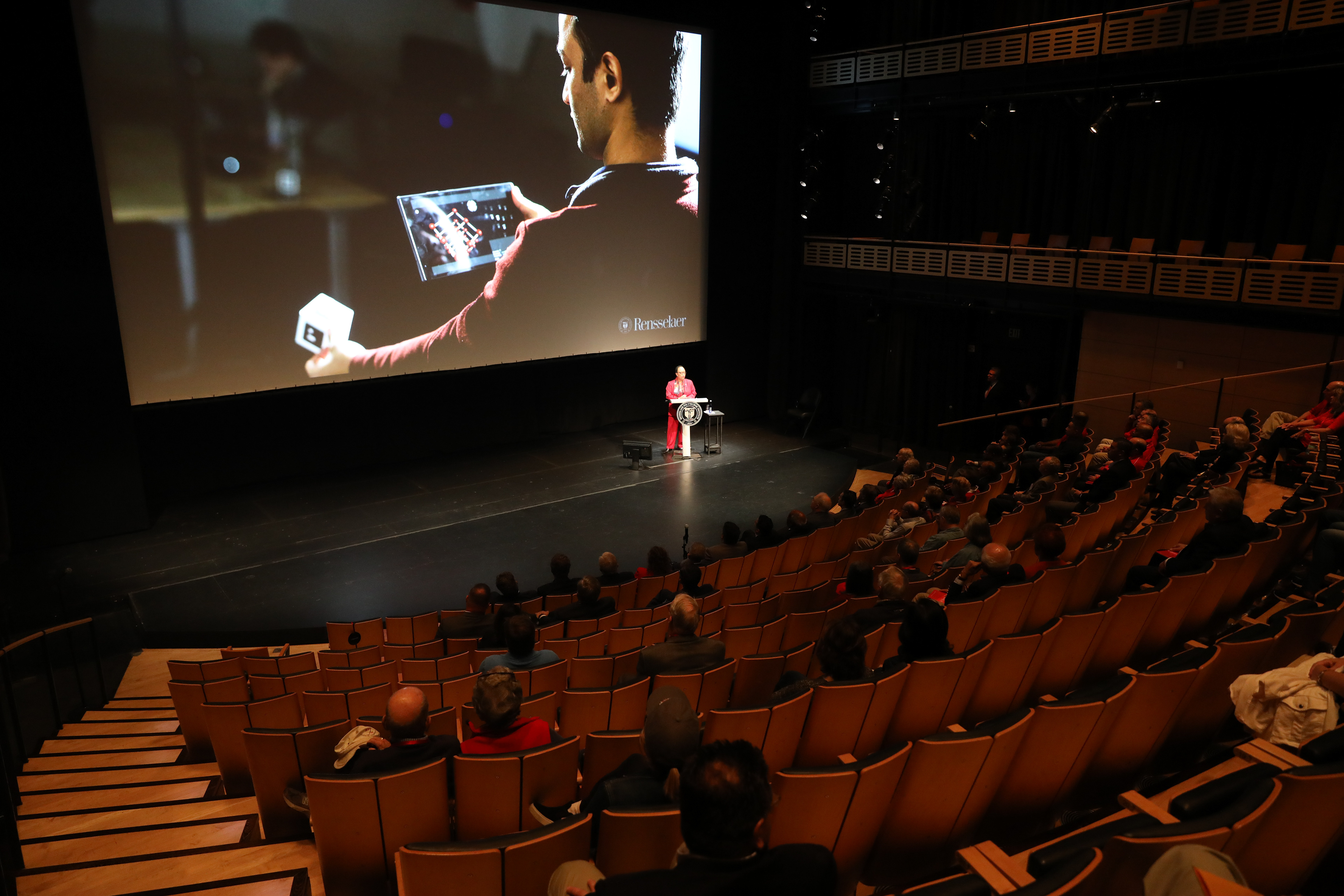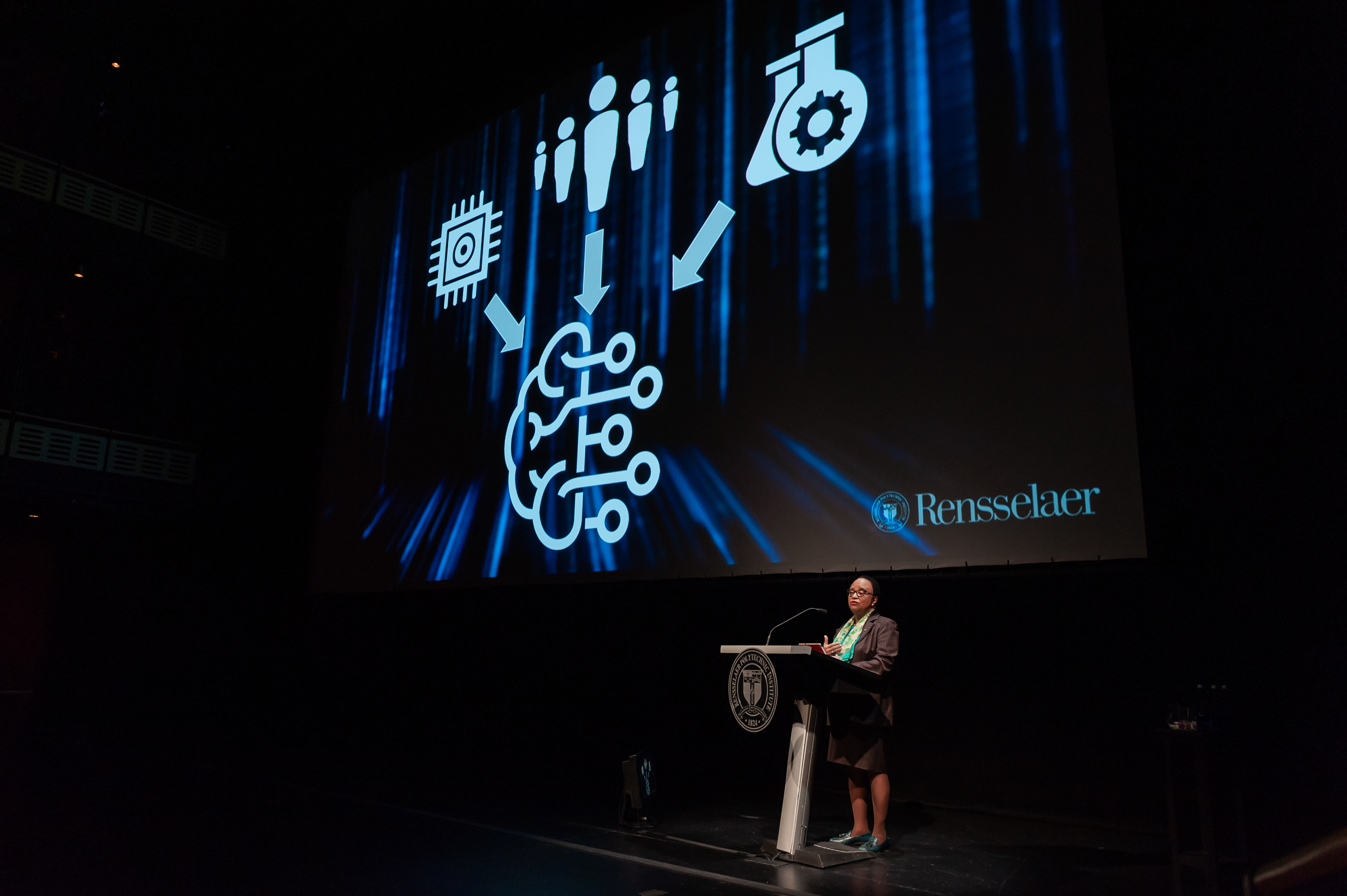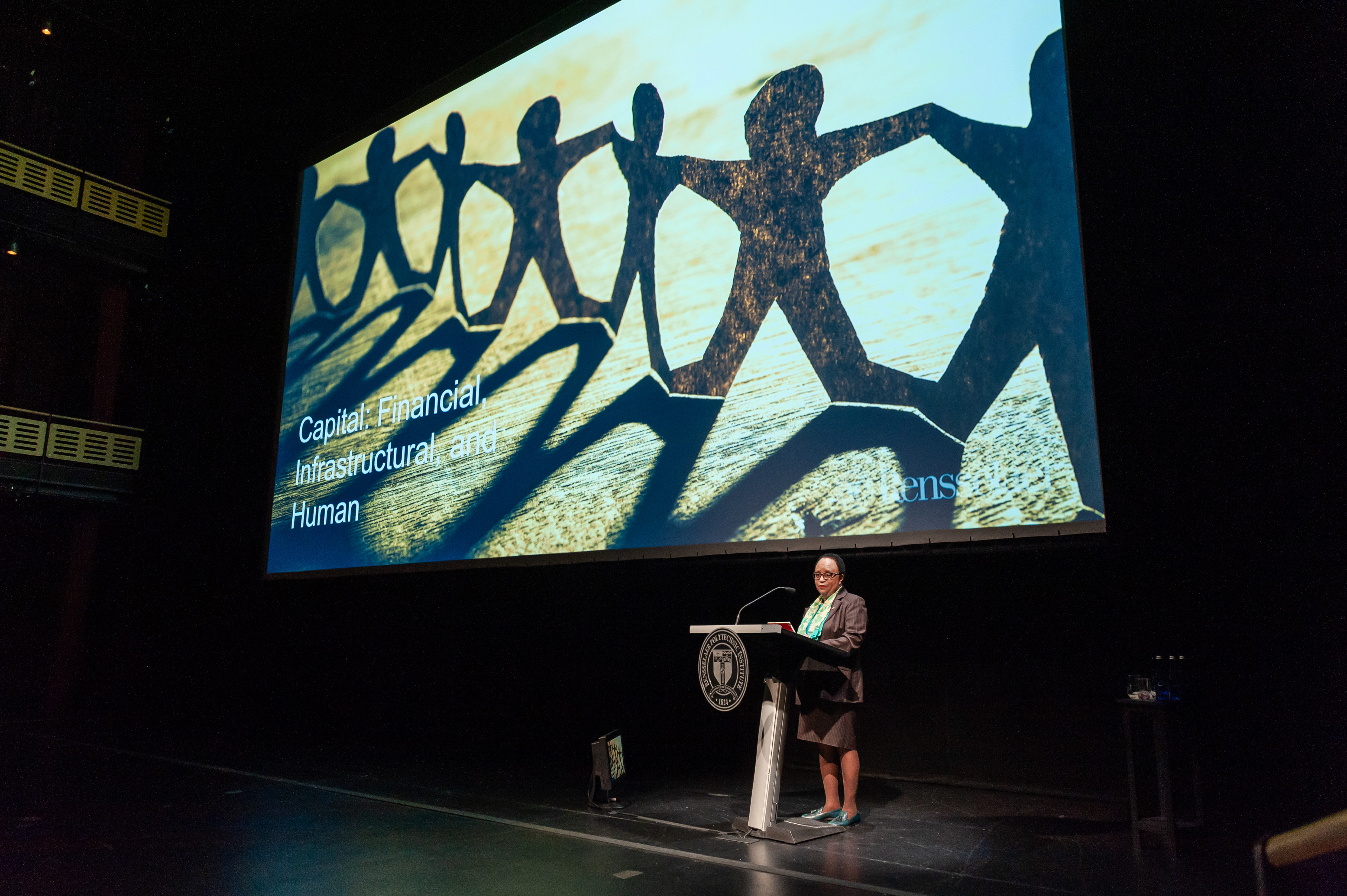Sample Slides
Global Challenges
Prevention and mitigation of disease; providing clean food and water; developing new sources of clean and renewable energy; establishing a sustainable, resilient national and international infrastructure; and enhancing national and global security."
Intelligent Internet of Things
As the Fourth Industrial Revolution gathers steam—with the merging of the digital, physical, and biological realms—one of its linchpins will be an Intelligent Internet of Intelligent Things.
Dr. Shirley Ann Jackson –– from MIT to Bell Labs
Animation that illustrates the interconnection of Dr. Jackson's early career decisions and accomplishments
Dr. Shirley Ann Jackson – Board Affiliations
Dr. Shirley Ann Jackson – Public Service
Dr. Shirley Ann Jackson – Career: A River Runs Through It
Shifting Currents: The Geopolitical Map of the World in 2030 (World Economic Forum Annual Meeting, Davos)
"The era following the Cold War in which the United States led the international order is coming to a close. Russia and China are exerting regional power—and by 2030, there will be a new degree of economic power in emerging economies, including Nigeria, Iran, Egypt, Indonesia, Mexico, and Turkey. And the speed at which they are emerging is unprecedented. Globally, over 2 billion more people will enter the middle class by 2030. However, it is not merely GDP that determines geopolitical power. Also key are access to, and control of, key strategic resources—especially energy-related resources; human capital; and connectivity in terms of technology and trade. So let us consider the ways that the forces unleashed by the Fourth Industrial Revolution will rewrite the geopolitical maps by 2030."
"Another key component of geopolitical power is human resources. The world population will grow from 7.6 billion today to 8.6 billion by 2030.14 India soon will overtake China as the most populous country. By 2050, Nigeria will overtake the United States to become the third most populous nation on Earth. The world is diverging demographically, with the developed world aging and the developing world experiencing a youth boom. In 2030, the divides are extreme—with much of Africa having a median population age under 20, while countries in Europe, China, Russia, and Japan have median ages more than twice that."
"India, Pakistan, Egypt, Nigeria, and Kenya all will have growing working age populations between 15 and 64. This could be a great economic benefit. But do they have the opportunities, education, and infrastructure to take advantage of it? A challenge to rising living standards: Working age populations will grow the most in South Asian and African countries where average education levels are among the lowest."
"Geography is, to some extent, destiny—as is control of strategic resources. But the technologies of the Fourth Industrial Revolution will play strongly against emergent and historical geopolitical alignments. There will be a new energy equation, one in which more energy will be produced locally, as well as new definitions of critical strategic resources around the globe. Climate change will expose new vulnerabilities and new shocks to the global order—as well as reinforce the value of global coordination and cooperation. Demographics will force a new reckoning between the aging developed world and the youthful developing world. Technology will both allow transnational alliances—and deepen intrastate divisions. Together, these forces argue strongly for new mechanisms to promote peace and prosperity around the globe."
Presentation Photos









Videos